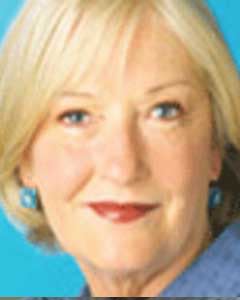When Brigadier General Karl McLean joined the military chaplaincy in 1987, it was very different from what it is today.
At that time, it consisted of two separate Christian-only chaplaincies: the Chaplain Branch (Roman Catholic) and the Chaplain Branch (Protestant), each with its own chaplain general and staff. Teams on local bases were similarly divided along Roman Catholic and Protestant lines. “The chaplaincy is now a single unified branch, which is multi-faith and increasingly open to further diversification,” says Padre McLean, chaplain general of the Canadian Armed Forces.
The Canadian Forces Chaplaincy is poised to expand beyond its current Christian-Jewish-Muslim constituency (see “By the Numbers,” p. 3), but precisely which faith groups will be represented remains to be seen. “The main point here is that we are open to further diversification,” he says.
Another marked difference: today, almost 15 per cent of the Regular Force chaplaincy is female, versus the one per cent back in 1987. “And we anticipate an increase in female candidates owing to the increase in women serving as religious leaders in various faith groups,” says McLean. “Great efforts are also being made to recruit visible minorities. At our last selection board meeting, four of the nine chaplain candidates selected were from visible minorities.”
Today, the chaplaincy is mandated to help all those in the military-whether religiously affiliated or not-to meet their spiritual needs. “These include members from faith groups who do not yet have chaplains and members professing to have no religious affiliation or expression,” he says.
Another change: whereas military chaplains used to be primarily garrison-based, “today they are far more operationally focused. Our chaplains deploy with their units overseas wherever and whenever our soldiers, sailors, airwomen and airmen deploy,” says Padre McLean.
In 1995, the Canadian Forces Chaplain School and Centre at CFB Borden was established, another significant milestone. “We are now able to offer effective training and education to our chaplains and prepare them to minister more effectively to the unique needs of military members and their families,” says Padre McLean.
As for advanced training, back in the 1980s, there were few opportunities. “Today’s Canadian military chaplain has access to numerous postgraduate opportunities, and these are in the process of expanding,” he says. Currently the branch holds billets at Ottawa’s Saint Paul University in canon law, pastoral counselling and ethics. “We also have chaplains training in ecumenical and interfaith studies and are currently looking into new programs in religion and culture, ethics and public service, spiritual direction, spirituality and conflict resolution.” All this in the service of better preparing chaplains to fulfill their increasingly kaleidoscopic roles.
As the branch moves toward greater diversification and more involvement in deployments around the globe, a strategic plan entitled Called to Serve is under way. This will entail 25 new initiatives, including the publication of a new branch manual and the creation of multi-faith centres on military bases across Canada. Innovative programs will prepare chaplains for working with local clergy during overseas operations to build better relationships and promote reconciliation. “There are strong religious dimensions in many operational situations, and chaplains may be able to assist in international and intra-national conflict resolution,” says Padre McLean. Chaplains will also be trained to better support the faith-group communities of military members and their families.
The family lives of those serving in the military are a strong focus of today’s chaplains, especially with new pressures from the social media. “Families and military members can be in contact frequently and easily, and that’s a positive thing, but since photos and stories of operations can be sent home in a day, families are more aware of what soldiers are facing and this can cause anxiety,” says Padre McLean. “And it can expose soldiers to problems at home that are hard to deal with when they’re so far away.” Chaplains help reduce anxiety by encouraging military to be careful about the news and pictures they send home.
Welcoming William and Kate
Sunday morning worship in Quebec City aboard the HMCS Montreal included three special people: the Duke and Duchess of Cambridge (shown at right, in photo above) were welcomed by Brigadier General Karl McLean, (above, left) who, as chaplain general to the Canadian Armed Forces, organized and presided over the July 3 service. “I was impressed by the duke and duchess’ active and interested participation in our worship service together,” says Padre McLean.
Among the three hymns at the service was Kate’s favourite, “Guide Me, Oh Thou Great Redeemer,” which was also sung at the royal wedding. “She and William sang with enthusiasm and on key,” says Padre McLean, who was recently appointed a queen’s chaplain and also awarded a doctorate from King’s College at Dalhousie University in Halifax.
The French hymn “Je louerai l’ternel” was also on the order of service. “The sailors had practised singing the hymns all the way from Halifax so they sang in tune, too!” says Padre McLean.
Conversations with the royal pair made it clear to McLean that they both felt a strong connection with Canada. “And all parts of Canada felt a strong connection with them,” he says. “I was very impressed with the knowledge and excitement that the duchess expressed at being in Canada and with the duke’s efforts to relate to francophone Canadians.”
Padre McLean joined the military chaplaincy in 1987 from the diocese of Fredericton. “I’ve been on a very long loan for the past 24 years, and I have one year to go,” he says.






